While mold can take many forms and look different, it can be a cause for concern for your health and property. In this article, learn to identify the different types of mold and where they usually grow.
No one wants to find mold. Ever.
If you have spotted or smell mold in your home or place of work, we’ll help you identify what type of spores are growing nearby. One thing is for sure: Never let mold go untreated.
In the meantime, if you’re seeing spores, discoloring or spots anywhere from the ceiling to basement foundation, consult these descriptions and photos of different types of mold.
Curious about which molds cause different kinds of health reactions? Consult our guide on toxic vs. nontoxic mold types, as well as mold allergy treatments.
Different Types of Mold from A to Z
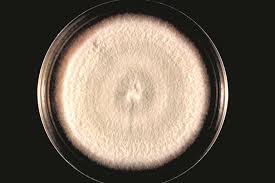 ACREMONIUM
ACREMONIUM
Mold type: Allergenic
Where it’s found: Moist, compact areas like window sealants, drain pains, humidifiers and cooling coils
Acremonium is one of those molds that starts off small and seemingly non-threatening and then turns into a white, orange, pink or grey powdery substance in moist, compact areas like window sealants, drain pans, humidifiers and cooling coils.
Acremonium doesn’t mess around; its toxicity has anecdotally been associated with bone marrow and immune system diseases. “Acremonium is one of the causative agents of eumycotic white grain mycetoma,” according to Doctor Fungus, a nonprofit dedicated to invasive fungal infection research.
Rare cases of “onychomycosis, keratitis, endophthalmitis, endocarditis, meningitis, and other conditions” have been attributed to exposure to acremonium, as well.[1]
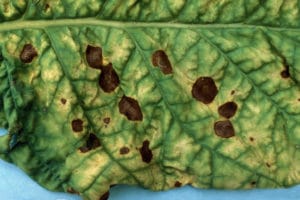 ALTERNARIA
ALTERNARIA
Mold type: Allergenic
Where it’s found: Showers, sinks and dark areas outside of buildings
One of the more common allergenic molds found inside and outside of dwellings and workplaces is Alternaria.
This velvety green and brown mold is frequently found in areas that are damp like showers, sinks and dark areas outside of a building.
It’s fast growing and has been associated with asthma-like symptoms.
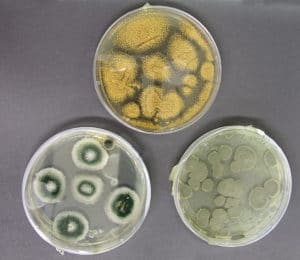 ASPERGILLUS
ASPERGILLUS
Mold type: Allergenic & toxigenic
Where it’s found: Dead leaves, stored grain, compost piles, decaying vegetation, and marijuana leaves
For a spore with such a rare and fancy-sounding name, Aspergillus is actually commonplace out of all the different types of mold infestations. It’s composed of long-shaped spores frequently found forming thick layers of mold.
It’s “often found growing on dead leaves, stored grain, compost piles, or in other decaying vegetation,” as well as marijuana leaves, according to Medline Plus.
There is a dangerous aspect to growth of Aspergillus; certain species can produce deadly carcinogens called aflatoxins. This mold is allergenic — meaning it produces symptoms typical of allergic reactions to mold, like coughing; sneezing; chest and nasal congestion; watery, sore or dry eyes; headaches and skin irritation — but its toxigenic potential ranges depending on the species and environment (there are185 or so varieties of this mold, but the CDC says fewer than 40 cause infections in people).[1]
“For people with healthy immune systems, breathing in Aspergillus isn’t harmful. However, for people who have weakened immune systems, breathing in Aspergillus spores can cause an infection in the lungs or sinuses which can spread to other parts of the body.” –Centers for Disease Control & Prevention (CDC)
In a study partially funded by the National Institute of Environmental Health Sciences, two types of aspergillus were listed as molds that could cause childhood asthma in infants who were exposed.
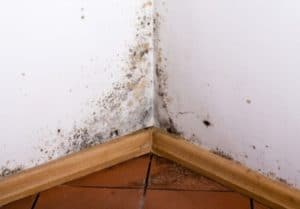
AUREOBASIDIUM
Mold type: Allergenic
Where it’s found: Wooden surfaces and behind wallpaper
Aside from having a name no one wants to try and pronounce, the allergic mold Aureobasidium is typically found on wooden surfaces and behind wallpaper.
At first it’s black, pink or brown in color but darkens with age.
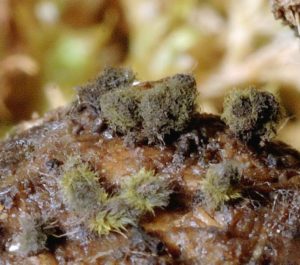 CHAETOMIUM
CHAETOMIUM
Mold type: Allergenic
Where it’s found: In buildings that have water damage, specifically in roofs, basement foundation or near leaky pipes
Chaetomium is a cotton-like mold typically found in buildings that have water damage.
It releases that easily recognizable “musty” odor as it goes from white and grey to black and brown in color.
Chaetomium is often found in places like roofs, basement foundations or near leaky pipes.
CLADOSPORIUM
Mold type: Allergenic & toxigenic
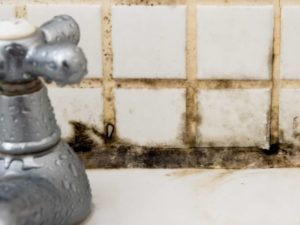 Where it’s found: Fabric, carpet, upholstered furniture, curtains, inside cabinets and under floorboards
Where it’s found: Fabric, carpet, upholstered furniture, curtains, inside cabinets and under floorboards
Cladosporium loves to make its home in fibrous materials, particularly fabrics, so beware of its suede-like, olive green and brown presence in carpet, upholstered furniture, curtains, and anything else with fabric.
Look for it inside cabinets and under floorboards.
You can find this mold thriving in warm or frigid conditions.
This mold can cause allergic reactions in the skin, throat, nose and eyes. Substantial inhalation can cause asthma, sinusitis and lung infections.
Direct contact with Cladosporium can cause skin rashes and lesions.
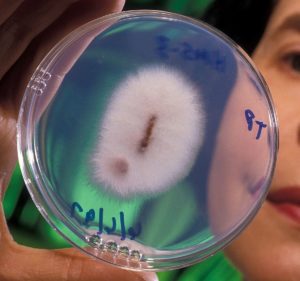 FUSARIUM
FUSARIUM
Mold type: Allergenic & toxigenic
Where it’s found: In buildings that have water damage, specifically in roofs, basement foundation or near leaky pipes
When you think of mold that grows on food, thinking of Fusarium.
Fusarium likes cold, wet conditions and is also associated with water-damaged buildings. It grows quickly from one room to another.
Standard allergic reactions, respiratory infections and inflammation are all possible side effects of coming in contact with Fusarium.
This mold produces mycotoxins and can be carcinogenic if consumed on food it has contaminated (Doctor Fungus).
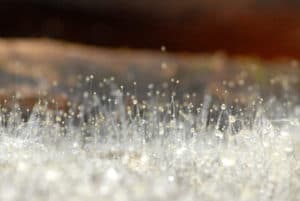 MUCOR
MUCOR
Mold type: Allergenic
Where it’s found: Air conditioning systems and ducting
Mucor grows quickly, in thick patches of grey or white color with tall hair-like structures point out from the growth. It’s frequently found wherever moisture is condensing from air conditioning systems and ducting.
Whether by inhalation or exposure through a break in the skin, Mucor takes the cake on dangerous side effects:
- Asthma
- Breathing difficulty
- Flu-like symptoms like fever and general malaise
In extreme exposure cases, people develop mucormycosis, a fungal infection that, depending on the type you contract, will attack the lungs, sinuses, GI tract, skin, brain spleen, or heart, according to the CDC.
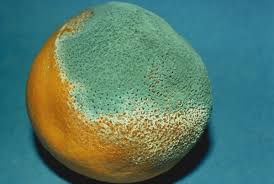 PENICILLIUM
PENICILLIUM
Mold type: Allergenic & toxigenic
Where it’s found: Insulation, wallpaper, water-damaged mattresses, furniture, carpeting and even food
Penicillium’s blue-green appearance and velvet-like texture make it recognizable in the surfaces it infiltrates; it frequently shows up in insulation, wallpaper, water-damaged mattresses and furniture or carpeting.
While it is used for modern antibiotic prescription (commonly known as Penicillin), Penicillium also helps us with animal husbandry, bee-keeping, fish farming and other forms of aquaculture, and other food processing needs of modern society.[1]
Penicillium can cause asthma, hypersensitivity pneumonitis, and allergic alveolitis.[2]
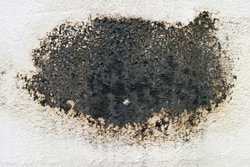
STACHYBOTRYS
Mold type: Allergenic & toxigenic
Where it’s found: Wet, humid environments that are out of sight, like interior walls, above ceilings and under floors
Often called “black mold” and infamous for its toxic compounds, Stachybotrys exhibits a slimy texture with dark green and black coloring, but will exhibit a powdery look if its water source runs dry. The spores grow easily in wet, humid environments that are out of sight (it takes a long time to grow); think invisible leaks in interior walls, above ceilings and under floors. It also releases a musty smell.
Black mold likes to grow in cellulose materials with low nitrogen levels, which is the case for a lot of indoor construction materials.[1]
Avoid exposure and call professionals to help you rid a building of black mold; the health consequences can be significant because of the possible severity of the mycotoxin effects.
The CDC says that black mold is potentially linked to acute idiopathic pulmonary hemorrhage in babies, and that any exposed children should see a physician immediately. For adults, however, the CDC doesn’t currently list any specific symptoms for black mold exposure beyond the typical mold allergies.
The CDC does say that, regardless of the type of mold you suspect is growing nearby, people should treat all mold as a health threat.
It’s advised that you don’t attempt to remove Stachybotrys on your own; call a professional like Moldgone and don’t disturb the spores, which can worsen any health problems from exposure. If you’re going to have your home treated for black mold, plan on spending your days and nights elsewhere while the area is treated.
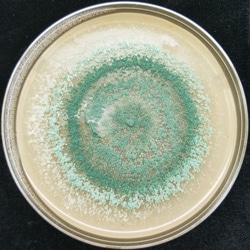 TRICHODERMA
TRICHODERMA
Mold type: Allergenic
Where it’s found: Wet fabric, carpet or wallpaper
Trichoderma grows as white spores with green or turquoise-colored patches and colonizes in wet fabrics, carpet or wallpaper. It has even been found in AC filters.
This mold releases mycotoxins that can cause lung and liver infections. This species has been likened to Stachybotrys (black mold) and can cause great damage to building materials, thanks to an enzyme that breaks down wood, paper and textiles. Ultimately, in rare cases, buildings can crumble if the infestation is great enough.
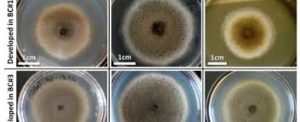 ULOCLADIUM
ULOCLADIUM
Mold type: Allergenic
Where it’s found: In kitchens and bathrooms and near windows
Typically found in rooms with high moisture levels (think bathrooms, kitchens and basements), Ulocladium points to water damage and can be easily confused with other mold types. This mold also grows around windows with a lot of condensation.
Spotted mold in your home or building? Contact Moldgone!
If you’ve spotted mold of any type in your home or place of work, get a MoldGone mold mitigation professional to come conduct an analysis.
You’ll be able to breathe easier knowing you have certified mold inspectors and remediators tackling your mold problem. Contact us today and schedule an inspection!
References:
[1] https://drfungus.org/knowledge-base/acremonium-species/
[1] https://www.cdc.gov/fungal/diseases/aspergillosis/causes.html
[1] https://journals.plos.org/plosbiology/article/file?id=10.1371/journal.pbio.1002266&type=printable
[2] https://www.legalinfo.com/content/toxic-mold/mold-types-and-causes.html


Trackbacks/Pingbacks